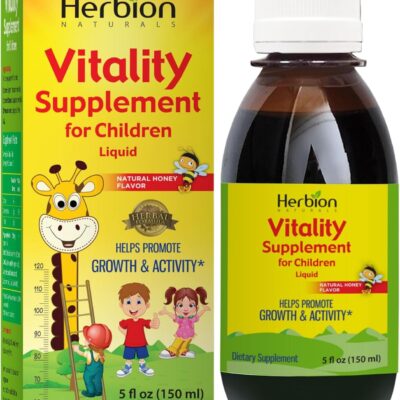If you’re looking to optimize your health, you might be overwhelmed by the tidal wave of nutrition advice available today. From superfoods to trendy diets, it’s hard to sift through the noise and find what really works. But what if we told you that some of the best strategies for improving your nutrition might not even be on your radar yet? In this article, we’re diving into 10 fresh nutrition tips that you likely haven’t tried but can easily incorporate into your daily routine.
1. Embrace the Rainbow
Eating the same fruits and vegetables might get a bit boring, but embracing a colorful plate can offer a plethora of health benefits. Each color represents different nutrients and antioxidants, each with unique healing properties. Think beyond just the basics like carrots and broccoli. Try incorporating foods like purple cabbage, yellow bell peppers, and beets. This rainbow effect not only makes your meals more visually appealing but helps you get a wide array of vitamins, minerals, and antioxidants.
2. Swap Out Cooking Oils
If you’re still using the same cooking oil for everything, it might be time for a change. Different oils can offer unique health benefits and flavors to your dishes. For instance, avocado oil is great for high-heat cooking due to its high smoke point and is rich in monounsaturated fats. Meanwhile, olive oil is fantastic for salads and low-heat cooking due to its heart-healthy properties. Experimenting with oils can elevate your culinary game and add unexpected health benefits.
3. Integrate Fermented Foods More
You’ve probably heard about the gut-brain connection, which sheds light on how our gut health can impact mood and overall wellness. Fermented foods like kimchi, sauerkraut, kombucha, and yogurt are packed with probiotics, which can help maintain a healthy gut flora. While yogurt might be familiar, don’t overlook the wide range of fermented foods available. Start small by adding a spoonful of sauerkraut to lunch or sipping on some kombucha with dinner, and watch how your digestion improves.
4. Don’t Skip Breakfast—But Mix It Up
We’ve all heard that breakfast is the most important meal of the day. But instead of sticking to the usual toast and eggs, why not try something a little different? Smoothie bowls loaded with fruits, nuts, seeds, and even leafy greens can be a vibrant way to start your day. Furthermore, savory breakfast options such as a quinoa bowl or a chickpea salad can bring a nutritious twist. Mix it up and give your taste buds a reason to cheer while fueling your body with a range of nutrients.
5. Hydrate with Herbal Teas
While water is undoubtedly essential, many people overlook the hydrating benefits of herbal teas. Not only do they count towards your daily hydration goals, but many herbal teas also carry various health benefits. For example, hibiscus tea can help lower blood pressure, while ginger tea can aid in digestion. Experimenting with a different herbal infusions can not only satisfy your thirst but also offer a world of flavor and wellness.
6. Snack on Nuts and Seeds
If you’re looking for a quick pick-me-up, instead of reaching for chips or cookies, consider nuts and seeds. Walnuts, almonds, chia seeds, flaxseeds, and pumpkin seeds are nutrient-dense and can provide lasting energy. Rich in healthy fats, fiber, and protein, they can help curb your appetite without the sugar crash. Keep a small portion in your bag or desk to have a healthy snack on-hand that will keep you satiated and energized.
7. Choose Whole Grains Over Refined
Switching out refined grains for whole grains might sound basic, but it’s an impactful change. Whole grains like quinoa, brown rice, barley, and farro retain their fiber and nutrients, helping with digestion and keeping you full longer. Try substituting whole grains for white rice or pasta in your next meal, and you might be surprised by how filling and satisfying they can be. Plus, they provide a nutty, rich flavor that elevates your dishes.
8. Create Balanced Meals with the Plate Method
The plate method is a simple way to create balanced meals without overthinking portions and nutrients. Imagine dividing your plate into sections: half of it should be filled with non-starchy vegetables, one-quarter with protein, and the remaining quarter with whole grains or starchy vegetables. This visual cue not only makes mealtimes simpler but also ensures that you get a mix of macronutrients in each meal, fostering better health.
9. Try Meal Prepping
Meal prepping can be a game-changer for your nutrition routine. Spending a few hours each week to prepare meals in advance helps you avoid the temptation of unhealthy choices. Plus, it can save time and reduce stress during busy weekdays. Consider cooking in batches or even chopping veggies ahead of time for quick assembly. You’ll find that with meals ready to go, it’s much easier to stay on track with your nutrition goals.
10. Mindful Eating Practices
In our fast-paced world, we often eat on autopilot—scrolling on our phones, watching TV, or simply racing through meals. Mindful eating encourages you to fully engage with your food; savor each bite and pay attention to your hunger cues. Take the time to appreciate your meals, consider where the food comes from, and listen to your body’s signals. You may find that you enjoy your food more and eat less when you eat mindfully.
Conclusion
Improving your nutrition doesn’t have to be complicated or overwhelming. By incorporating these ten nutrition tips, you can innovate your meals and elevate your health in ways that feel sustainable and enjoyable. From rediscovering the colors of your plate to embracing new cooking oils and snacks, these changes can lead to a healthier, more vibrant you. So go ahead, unlock your health potential and give some of these tips a try—you might just discover a new favorite way to nourish your body!






